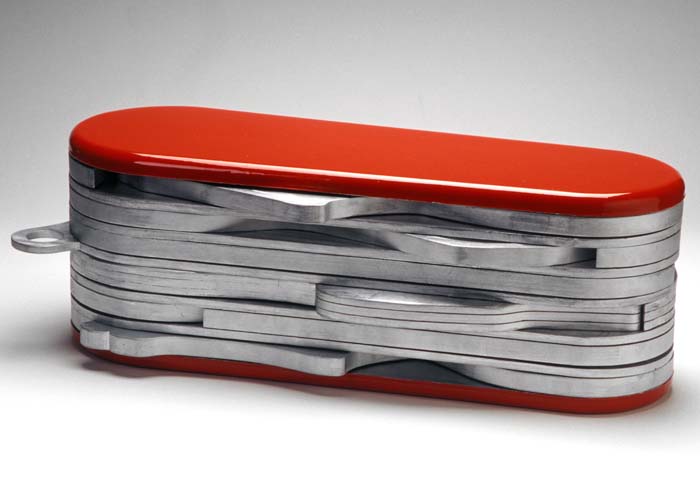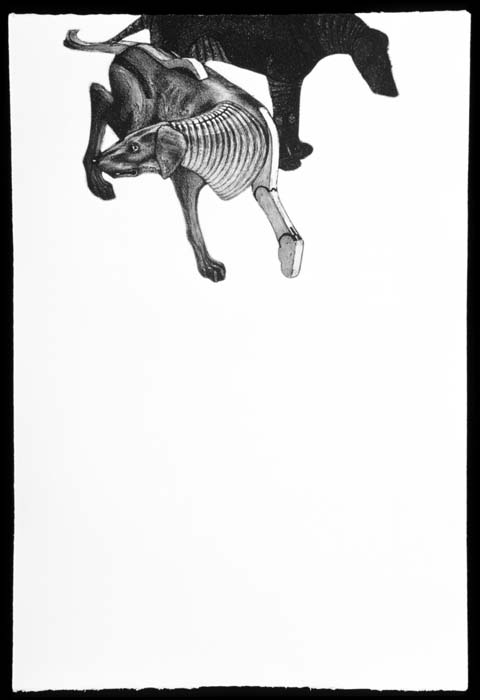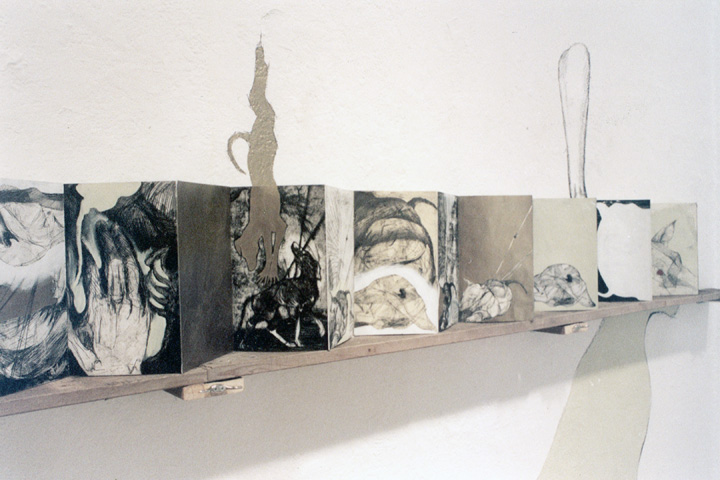As an artist who feels at home in a major research institution, the content of my recent work in the Domestication Series is drawn substantially from classic fields of study like veterinary anatomy and also from scientific theories about the human-animal relationship. Biology, zoology, veterinary medicine, paleontology, and taxonomy are natural habitats for the ideas in my work. Images and concepts I have gleaned from files of animal skins at zoological museums, the behavior of dogs at animal shelters, and my work as a sculpture and modelmaking intern at the Smithsonian Institution pack my sketchbooks and feed my work. The focus of the domestication series has been the dog, and a disdained home-dweller, the rat. The dog is a loaded image because of its years of association with humankind. It is the subject of centuries of anthropomorphism on account of our struggle to understand that long-standing relationship.
My early work in this series started at the basic biological level by peeling back the layers of anatomy within the dog and pushing the possibilities of what a canine body could do and how it could be constructed. Soon I began to study and produce work concerning the dog's roles in society and specifically how their adaptability has become a multifaceted tool for human needs and wants. However, the human uses of the dog drove me to consider the ethical implications of domestication. What I found surprised me and profoundly influenced my work. Many scientists now believe that domestication was the result of the process of natural selection, much like the development of any other symbiotic relationship in nature; this means that the whitewashed rectilinear human home is the natural environment for many domesticated animals. With further study, I discovered that many other non-domesticated animals, like rats, have sought out contact with humans and our environment and flourished disproportionately on account of that contact. Man-made dwellings as native habitat became the curious focus of my prints and sculpture.
The square sterility of modern human constructions inspired, both formally and conceptually, this series of sculpture and prints. The work looks at the influence of rectilinear spaces on natural forms. The planar sculptures of rats and dogs project into the gallery and physically adapt in reaction to that space. The prints affect a similar feeling of sculptural and architectural space; images trail off the edges of the paper, reminding the viewer of its physical limitations in size and shape. Like the gallery, the paper becomes a physical space, which the images enter and exit. On paper, in life, and in the gallery, natural forms vie and coalesce with squared-off environments.
- NJS, 2003










